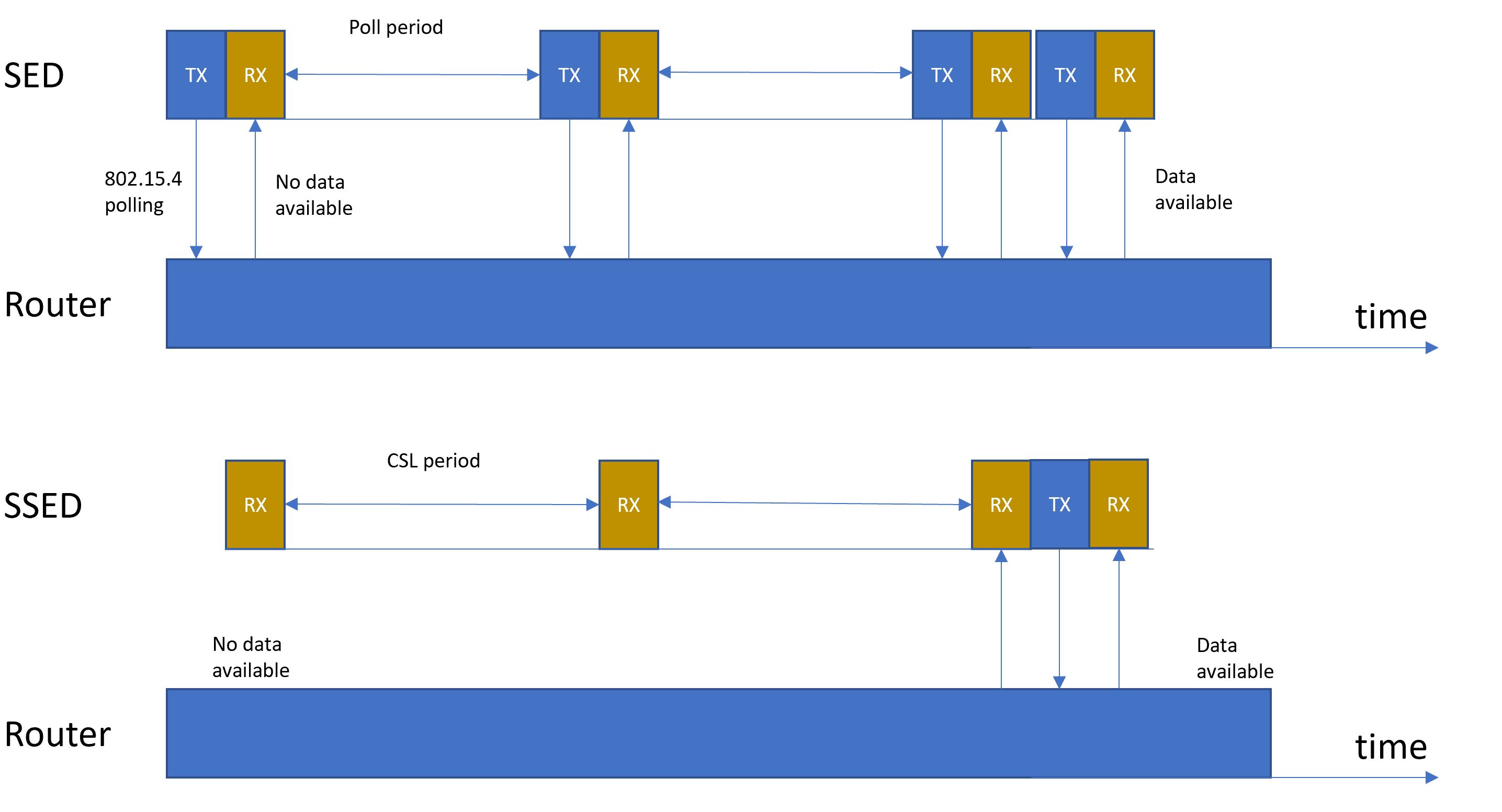What is Matter Synchronized Sleepy End Device
Matter Synchronized Sleepy End Device are devices that take advantage of the Thread 1.2 optional enhancement to SEDs, known as Synchronized Sleepy End Devices (SSEDs). SSEDs are highly responsive, low power end devices that can maintain a good quality of service in large, high density networks. This enables new use cases, such as a scalable network of low-latency, battery powered actuators in the commercial market.
SSEDs achieve this by using the Coordinated Sampled Listening (CSL) feature of IEEE 802.15.4-2015, maintaining synchronization with their parents and scheduling time to have their receivers enabled. The parent is responsible for buffering messages for the SSED until the SSED's receiver is enabled.
This enables low power end devices that have low link latency, as they can remain asleep for most of the time, but still wake up frequently for short periods in order to receive messages. Unlike a non-synchronized SED that must wake up regularly and transmit a MAC Data Request, SSEDs can simply wake up and listen for a short duration to determine if there are any buffered messages.
By reducing the number of over air messages that are required, more end devices can co-exist in the same space, as there is a lower chance of message collision. Continued synchronization for the link can occur on the back of normal application data exchange. By removing the requirement for regular MAC Data Request transmissions, battery life is also improved.
SSEDs are particularly optimal for low power devices that primarily expect to receive with low latency, such as actuators. Actuators can take advantage of their regular receptions to keep the link synchronized and can listen with a frequency and duty cycle according to the application requirements. Large numbers of these low-latency actuators can exist in the same network without flooding it with MAC Data Requests.
OpenThread SDK 2.3.1.0 or higher must be used to support SSED.
